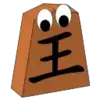Under FIDE rules, a dead position is reached by 66... Qg4+?? and the game is immediately drawn exactly as #2 says. This is why in my hundreds of answers about rules, not once have I claimed that Lichess uses FIDE rules.
#9 is correct that in general, dead position detection (even with forced sequences like this) is a near-impossible problem which I'm continuing to work on:
github.com/ddugovic/Stockfish/tree/helpmate
chess.stackexchange.com/questions/18699/maximum-number-of-pieces-on-board-in-dead-position
#9 is correct that in general, dead position detection (even with forced sequences like this) is a near-impossible problem which I'm continuing to work on:
github.com/ddugovic/Stockfish/tree/helpmate
chess.stackexchange.com/questions/18699/maximum-number-of-pieces-on-board-in-dead-position


